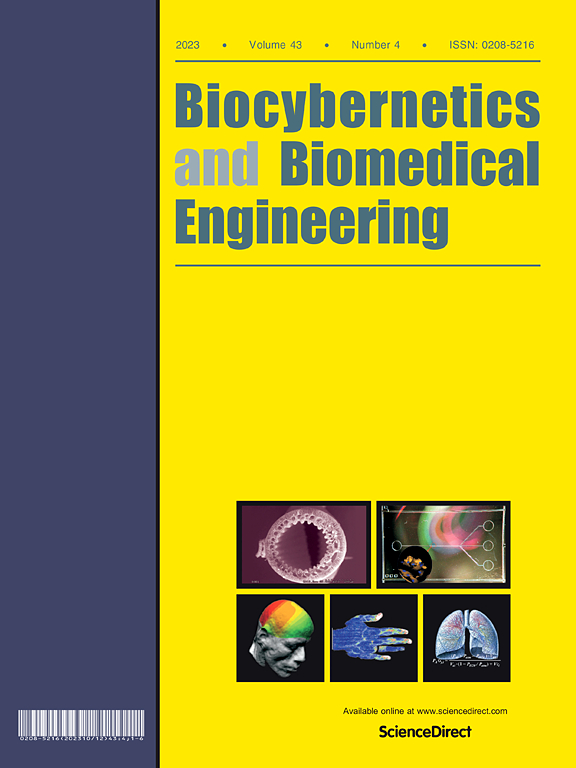膝骨关节炎的远程超声检查新方法
IF 6.6
2区 医学
Q1 ENGINEERING, BIOMEDICAL
引用次数: 0
摘要
在这项研究中,我们提出了创新技术和一种新的标准化程序,使膝关节骨关节炎的家庭,定期和可靠的超声监测成为可能。收集了27名具有不同人体特征的志愿者的解剖和超声数据,从而开发了两种技术解决方案:i)三种探头定位系统(可穿戴支架,胶膜,临时纹身),提供预定义的开口,以确保超声探头的准确和可重复放置;Ii)一种图像选择算法,用于自动识别非专业用户获得的正确超声图像。这些解决方案的有效性和可用性在20名没有超声成像经验的志愿者和20名护理人员身上进行了测试。在第一步中,放射科专家获得参考超声图像。在第二步中,所有志愿者利用定位系统放置探针并获取信息图像(由算法自动从视频中提取)。可穿戴式支架的平均可用性百分比得分最高(98.7%),其次是纹身(94.8%)和胶片(89.6%)。总的来说,这三种定位系统被证明是有效的指导超声采集的经验不足的受试者。在所有志愿者中,使用支具成功获得信息图像的平均成功率最高(70%),而护理人员中使用纹身获得的平均得分最高(76%)。这些发现强调了为非专业用户进行可靠的远程超声采集的可能性,并为新型远程超声手术开辟了道路,实现了对膝关节骨关节炎的精确、异步和可重复的监测。本文章由计算机程序翻译,如有差异,请以英文原文为准。
A novel approach for remote ultrasonography of knee osteoarthritis
In this study, we propose innovative technologies and a novel standardized procedure, enabling at-home, periodic and reliable ultrasound monitoring of knee osteoartrithis.
Anatomical and ultrasound data were collected on a population of 27 volunteers with different anthropometric features, leading to the development of two technological solutions: i) three probe positioning systems (wearable brace, adhesive film, temporary tattoo), provided with predefined openings to ensure accurate and repeatable placement of an ultrasound probe; ii) an image selection algorithm for automatic identification of the correct ultrasound images acquired by non-expert users.
The effectiveness and usability of these solutions were tested on 20 volunteers and 20 caregivers, with no prior experience in ultrasound imaging. In the first step, an expert radiologist acquired reference ultrasound images. In the second step, all volunteers exploited the positioning systems to place the probe and acquire informative images (automatically extracted by the algorithm from a video).
The average usability percentage score was highest for the wearable brace (98.7%), followed by the tattoo (94.8%), and film (89.6%). Overall, the three positioning systems proved to be effective in guiding ultrasound acquisitions for inexperienced subjects. The highest average rate of informative images successffully acquired among all volunteers was achieved by using the brace (70%), while the highest average score among the caregivers was obtained using the tattoo (76%).
These findings highlight the possibility to perform reliable remote ultrasound acquisitions for non-expert users and opens the way to novel tele-ultrasound procedures, enabling a precise, asynchronous, and repeatable monitoring of knee osteoarthritis.
求助全文
通过发布文献求助,成功后即可免费获取论文全文。
去求助
来源期刊

Biocybernetics and Biomedical Engineering
ENGINEERING, BIOMEDICAL-
CiteScore
16.50
自引率
6.20%
发文量
77
审稿时长
38 days
期刊介绍:
Biocybernetics and Biomedical Engineering is a quarterly journal, founded in 1981, devoted to publishing the results of original, innovative and creative research investigations in the field of Biocybernetics and biomedical engineering, which bridges mathematical, physical, chemical and engineering methods and technology to analyse physiological processes in living organisms as well as to develop methods, devices and systems used in biology and medicine, mainly in medical diagnosis, monitoring systems and therapy. The Journal''s mission is to advance scientific discovery into new or improved standards of care, and promotion a wide-ranging exchange between science and its application to humans.
 求助内容:
求助内容: 应助结果提醒方式:
应助结果提醒方式:


